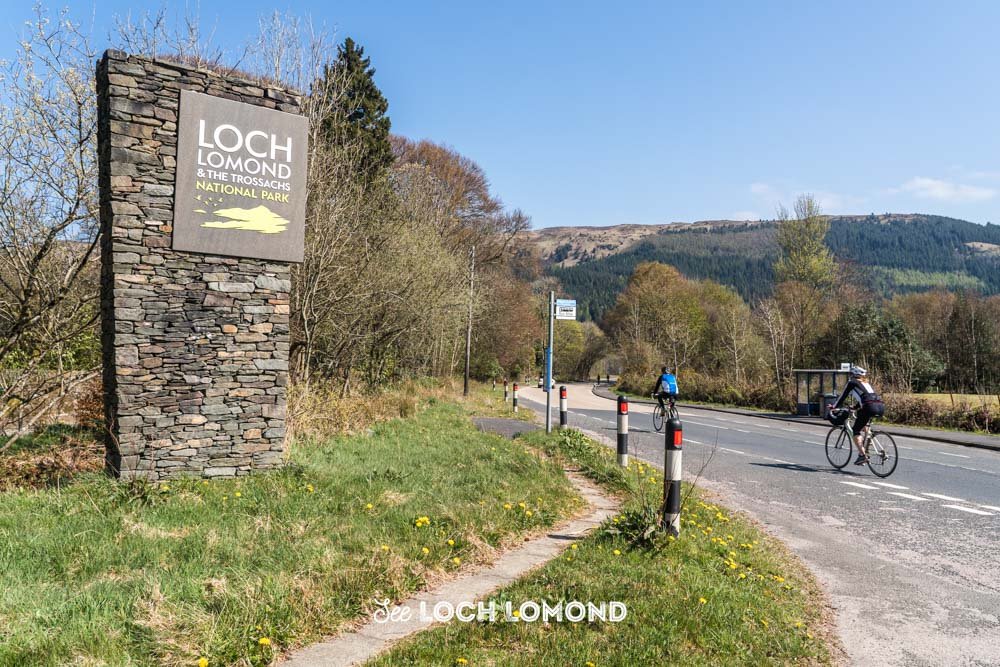10 Facts about Loch Lomond
Here are ten commonly asked questions about Loch Lomond and The Trossachs National Park
1) How big is the National Park?
The National Park covers 720 square miles and comprises four key regions: Loch Lomond, The Trossachs, Breadalbane, and Argyll Forest. Gateway signs are on all of the main routes into the National Park; this page provides some examples.
2) When was the National Park created?
The Scottish Government established Scotland's first National Park, Loch Lomond and the Trossachs, in 2002.
3) How big and deep is Loch Lomond?
The largest expanse of fresh water in the UK, Loch Lomond, is 22.6 miles long with a surface area of 27.5 square miles. The southern end of the loch is shallower than the north, where the deepest point (close to Invernsaid) is 625ft. to put it into perspective and quote from the commentary of boat cruises that pass nearby, you could get two Big Ben’s on top of each other with room to spare.
4) How many islands are there on Loch Lomond?
Depending on the water level, the loch has around 30 islands. A separate guide to the Loch Lomond islands contains more information and instructions on discovering them.
5) What other lochs are there in the National Park?
As well as Loch Lomond, there are some other lochs in Loch Lomond and the Trossachs, including Loch lubhair & Loch Dochart, Loch Tay (just a small amount of it is in the National Park), Loch Earn, Loch Voil and Loch Doine, all of which are in Breadalbane. Whilst the Trossachs has Loch Ard, Loch Chon, Loch Venachar, Loch Katrine, Loch Achray, Loch Drunkie, Lochan Reoidhte, Lake of Menteith and Loch Lubnaig. In Argyll Forest, Loch Sloy, Loch Long, Loch Eck, Loch Goil and Holy Loch. There are also a host of smaller lochs and lochans.
6) How many Munros are there in the National Park?
A Munro is a mountain in Scotland over 3,000 ft. There are 21 in the National Park, with Ben Lomond the most famous and southerly in Scotland. Ben More, near Crianlarich, is the highest at 1,174m.
7) How many people live in the National Park?
The total population of the National Park in 2011 was 17,752, which was split across many towns and villages.
8) What are the natural wonders of Loch Lomond and the Trossachs
We've mentioned the Munros; there are smaller Corbetts and some excellent hill to climb, lochs and islands. In addition, there are some beautiful glens, waterfalls and forests. Both the Argyll Forest in Cowal and Queen Elizabeth forest in the Trossachs are spectacular.
The Great Trossachs Forest is the size of Glasgow, a 200-year project to protect the land and animals. Finally, the Highland Boundary Fault, which runs across Scotland, divides the Scottish lowlands with Highlands cuts through the National Park and is most noticeable close to Balmaha.
9) What wildlife is in the National Park?
The number of Red Squirrels in the National Park has grown in recent years. View them from wildlife hides in several places, including Aberfoyle, Cormonachan Woodlands, Loch Goil, Ardentinny Benmore Botanic Garden, and Glenbrater; there is also a Red Squirrel trail in Balmaha.
You'll see Highland Cattle in fields, plus, if you're lucky, Roe Deer and Red Deer.
There are two RSPB reserves at Gartocharn and Inversnaid; look out for Ospreys and Golden Eagles. On the seawater lochs at Cowal, you can see Otter, Harbour Porpoise and Common seal.
10) What events take place in the National Park?
There are Highlands Games and Gatherings at Balloch, Killin, Callander, Kinlochard, Lochearnhead and Cowal, with Piping on the Square each Summer in Drymen. There is also Go Swim Loch Lomond! the annual open water swimming event at Loch Lomond Shores. Drymen hosts Scotland's longest-running agricultural show, The Drymen Show, and Callander is known for staging excellent seasonal festivals. Finally, organisations such as Forestry and Land Scotland, Sir Walter Scott Steamship Trust, Friends of Loch Lomond and Trossachs, National Trust for Scotland, and the local communities held good events for locals and visitors.
Thanks for reading
Words and photography by Paul Saunders. Visit Paul’s Marketing and Photography websites for details of his services in Scotland.
Please let us know if you found the guide helpful in the comments section below.








Buy our guidebook, 101 Things to Do in Loch Lomond and the Trossachs, packed with attractions, views, and activities to enjoy.